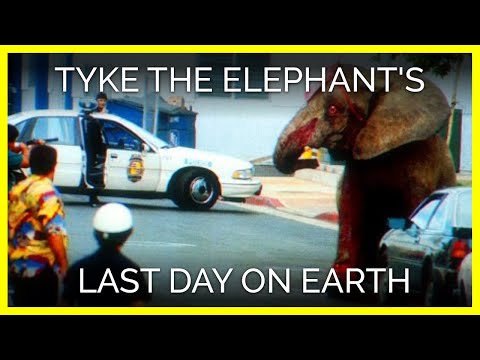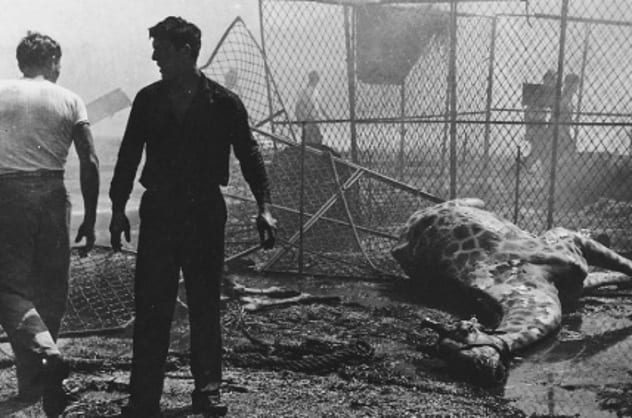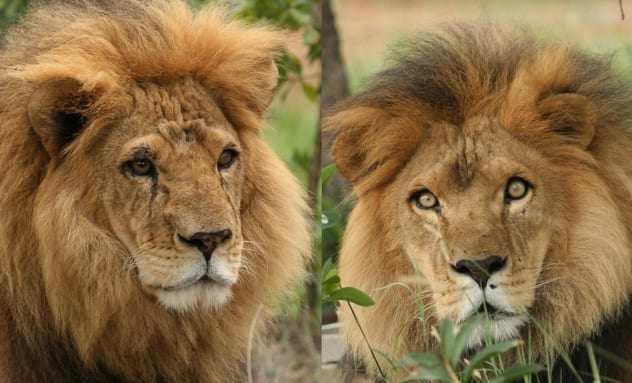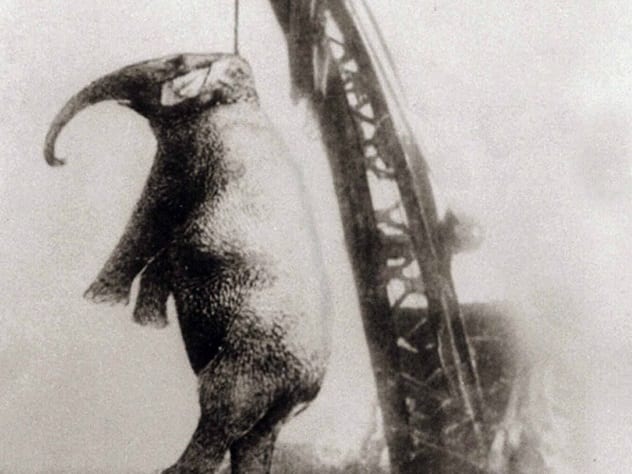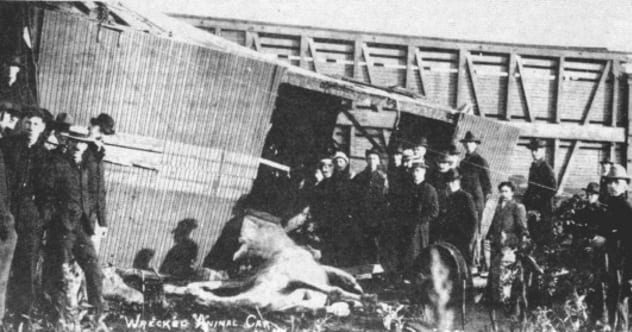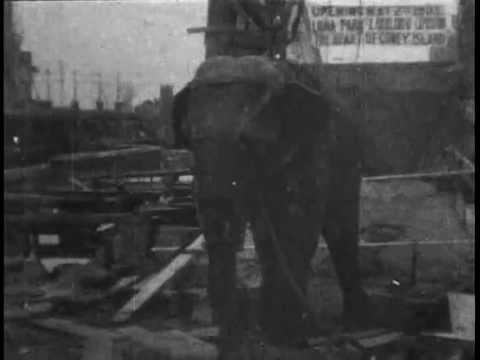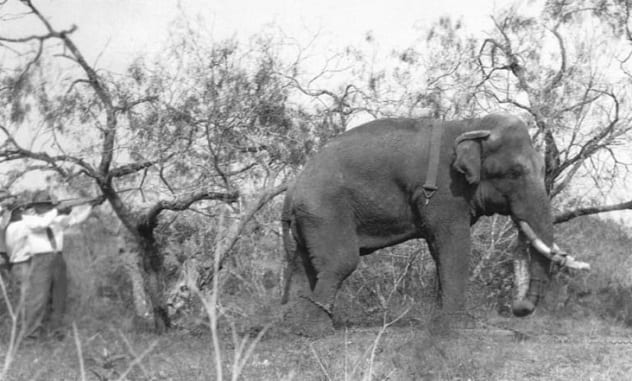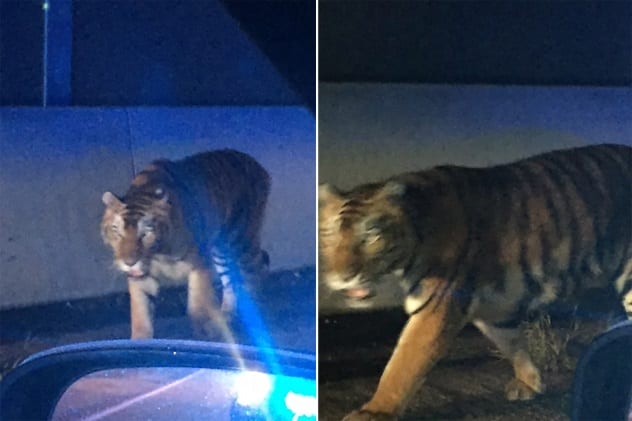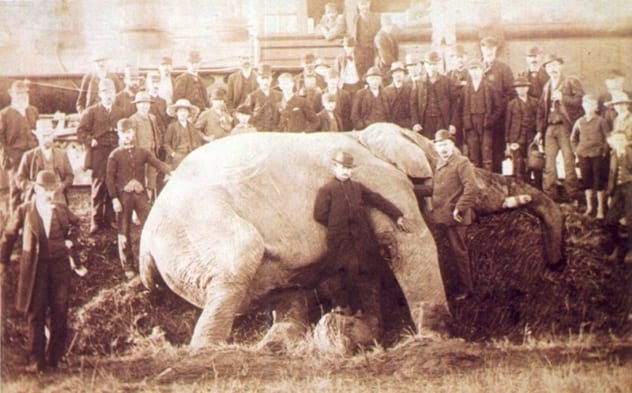For over 100 years, circuses have exploited animals that are often dominated, confined, and treated violently. They have been ripped from their natural habitat and are forced to perform relentlessly most nights. The following tragic deaths of circus animals are heartbreaking in both their brutality and their complete lack of compassion.
10 Tyke
One of the most haunting videos of an escaped circus animal is that of Tyke the elephant. Tyke suffered abuse at the hands of her trainers at Circus International of Honolulu, Hawaii, for many years. An African bush elephant from Mozambique, she had tried to escape on two previous occasions. In 1994, she bolted for the doors during a performance at the Neal S. Blaisdell Center near downtown Honolulu after killing her trainer and seriously injuring her groomer. For more than 30 minutes, she ran through the streets until eventually, local police killed her in a shower of at least 86 bullets. As Tyke collapses on the ground, her blood-red eyes and terrified expression can be seen on her face. Citizens of Honolulu, including the parents of traumatized young children, sued the circus for causing them to suffer psychological stress from witnessing Tyke’s death.[1]
9 The Cleveland Circus Fire
In August 1942, an estimated 100 circus animals died in a tragic fire that consumed the tent of the Ringling Bros. and Barnum & Bailey Circus in Cleveland, Ohio. Due to the large amounts of straw surrounding the animals, lions, tigers, camels, zebras, and other species spread out between nine locked cages all perished in the flames. The circus workers were able to rescue the horses and elephants, which were led to safety, although one elephant suffered such horrific burns that they were unsure if she would survive. One police inspector who arrived at the scene of the fire stood by with a submachine gun ready to shoot any escaped animals—he took down a zebra, a giraffe, and 24 other animals. Following the fire, which caused $126,000 in damages, the circus was unable to determine exactly how many animals they had lost, although they believed the figure was around 100. Two famous gorillas named Garagantua and Toto, who were a highlight of the circus, were reported safe.[2]
8 Jose And Liso
In 2017, the heartbreaking story of two former circus lions that had been set free into the wild only to be killed by poachers spread online. Jose and Liso had spent their lives performing in traveling circuses around Peru and Colombia, where they suffered horrific abuse from their handlers. Once they were rescued by Animal Defenders International (ADI), they were shipped back to their home country of South Africa to live at Emoya Big Cat Sanctuary and finally be safe. However, poachers broke into the sanctuary and poisoned the two large males. Poachers in this area are known for removing the heads and paws from the lifeless bodies of lions and selling them to make a large profit on the black market. Jan Creamer, president of ADI, said, “Jose and Liso had suffered a terrible life of abuse, but their new life in Africa had given them a new lease of life. We are heartbroken that these gentle souls have had their well-deserved freedom so cruelly taken from them and will do all that we can to ensure this cowardly killing does not go unpunished.”[3]
7 Mary
A five-ton elephant became known as “Murderous Mary” after she was hanged for her crimes in 1916. Mary was performing at Sparks World Famous Circus when she killed a trainer named Red Eldridge. With no previous qualifications or training, it’s surprising that Eldridge, a homeless man who had just been hired, was allowed to ride on Mary’s back in the elephant parade, but that is exactly what sealed both of their fates. According to one witness, Eldridge poked the elephant around her ear with a hook as she reached down to eat a watermelon. Mary, in a fit of rage, then threw him to the ground with her trunk and stomped on his head, crushing him to death. The next day, Mary was taken to Unicoi County, Tennessee, where a crowd of over 2,500 people gathered to watch her execution. She was then hanged by a crane (though the chain broke on the first attempt). A photo of the event has become a truly haunting historical image, the brutality of which has made people question its authenticity over the years, but humans really are this cruel.[4]
6 The Great Wallace Brothers Circus Train Disaster
The Great Wallace Brothers Circus train disaster tragically took place in 1903 in Durand, Michigan. At around 8:30 AM, two trains transporting the circus collided due to a failure with the brakes. This unfortunate incident caused the deaths of 23 people, wounded more than 100, and killed some of the animals on board. Three camels, a Great Dane, a horse, and an elephant named Maud also lost their lives in the fatal accident, and they were buried close to the crash site. The Owosso Argus Press reported at the time, “The scene that followed is indescribable, the cries and groans from the injured persons and frightened passengers, the roars from the terrified animals and the escaping steam aroused the whole city, and hundreds rushed to the scene to assist in every way in the sad task of caring for the dead and wounded.” They added, “The survivors of the wreck are a sober looking lot. One of them was overheard saying, ‘Thank God I’m still alive!’ “[5]
5 Topsy
In 1903, Topsy the Elephant was sadly executed by electrocution at Luna Park on Coney Island. The New York Times writes, “Topsy had, in fact, killed a man, but her execution was ordered only later after she proved unmanageable at the hands of a trainer who savaged her with a pitchfork.” After killing a trainer, Topsy was originally sentenced to die by hanging. The Society for the Prevention of Cruelty to Animals claimed this method was “unnecessarily cruel.”[6] At the time of Topsy’s death, there was an ongoing “War of the Currents” between Nikola Tesla and Thomas Edison. With Edison’s supporters eager to show that an alternating current was more dangerous than a direct current, they used Topsy’s execution as an example—they had already electrocuted dogs, calves, and horses with this method and wanted to take it a step up. Before Topsy was executed, she was fed cyanide-laced carrots and had copper sandals placed on her feet to increase conductivity. Topsy had been smuggled into the United States and kept captive as a performer for the Forepaugh Circus for almost all of her life. Her tragic end was captured on film and is a heartbreaking video to watch.
4 Duke
Deaths of performing animals even occur in modern times. In 2013, a show horse named Duke was only nine years old when he died from being shocked at the Cowtown Rodeo in New Jersey. According to the show promoters, there was no wrongdoing, as Duke collapsed during the show due to an “aneurysm of his aorta blood vessel.” They explained, “Our vet has assured us that this had nothing to do with the rodeo event and it is a natural (although rare) occurrence to have a horse pass from this reason.” The Cowtown Rodeo has been running since 1929.[7] However, animal rights activists claim there is evidence caught on video that he was electrocuted. Members of SHARK—SHowing Animals Respect and Kindness—witnessed a handler using a “hot shot” electric prod before the gate was opened and Duke was released. Shocking performance animals is prohibited by the Professional Rodeo Cowboys Association (PRCA).
3 Black Diamond
When the Al G. Barnes Circus paraded through the streets of Corsicana, Texas, in 1929, all eyes were on Black Diamond the elephant. The parade was led by Black Diamond’s trainer, H.D. “Curley” Prickett, and the crowds were unaware that the elephant, who had previously been named Tusko and Congo, had already killed three people. Black Diamond was such a spectacle for the crowds that he was kept in the parade, albeit heavily shackled and chained between two female elephants in an attempt to stop him from bolting. His tusks were also sawed short, and his trunk was restricted by a heavy iron bar. During the parade, Black Diamond attacked again—throwing Prickett into the air and dragging another trainer to the ground. He proceeded to kill Prickett’s boss, Eva Speed Donohoo. A witness recalled, “People were hollering and cranking their Model T’s. Some of them had come in horses and wagons, and horses were rearing up and havoc was everywhere. The last thing I saw was Prickett went in the air, and [the elephant] went up to that woman, and we moved out.”[8] Black Diamond was executed just outside of Kenedy, near San Antonio. A team of executioners were assembled, and they fired as many as 170 rounds (estimates vary widely) until he fell to the ground.
2 Suzy
In 2017, a six-year-old Bengal tiger named Suzy was gunned down in Stockbridge, a suburb of Atlanta, after escaping from a truck on its way from Florida to Tennessee. The truck, owned by Feld Entertainment, was carrying 14 tigers belonging to trainer Alexander Lacey. The large animals were on their way to a Tennessee airport for the next part of their journey to Germany. Suzy was found in a backyard chasing after a dog when she was cornered by police, and Feld Entertainment didn’t even realize she was missing until they reached the airport. A spokesperson for PETA stated, “This isn’t the first big cat to die violently at the hands of Feld Entertainment. Others include a tiger who was fatally shot at close range while locked in a cage and a lion who baked to death in a hot boxcar.” The spokesperson added, “When Feld sentenced these tigers to a miserable life in a German circus, this tiger’s fate was sealed. She was gunned down on the streets of Atlanta, and PETA bets that she won’t be the last to die.”[9]
1 Jumbo
According to the documentary Jumbo: The Life of an Elephant Superstar, the eponymous elephant “was the world’s first animal superstar.” Jumbo was a huge crowd puller at the London Zoo—offering rides on his back—before he was sold to P.T. Barnum in 1882. When Jumbo moved to New York, his arrival attracted 10,000 people, but just three years later, he was tragically hit by a train in St. Thomas, Ontario, and killed. However, not everyone believes this was how Jumbo’s life came to an end, and his death is still shrouded in mystery to this date. Scientists revealed, “Jumbo was constantly trying to regenerate his own bones, which were being damaged by how he was kept—a combination of factors, the fact that he was chained, the fact that he was kept on hard surfaces and carrying all these people on his back.”[10] They believed that Jumbo was suffering from a form of PTSD, having witnessed his mother being killed by African hunters. Was the story of Jumbo’s death a cover-up for his slowly declining health? Either way, his story is one of much sadness and tragedy. Cheish Merryweather is a true crime fan and an oddities fanatic. Can either be found at house parties telling everyone Charles Manson was only 5’2″ or at home reading true crime magazines.Twitter: @thecheish Read More: Twitter Facebook
